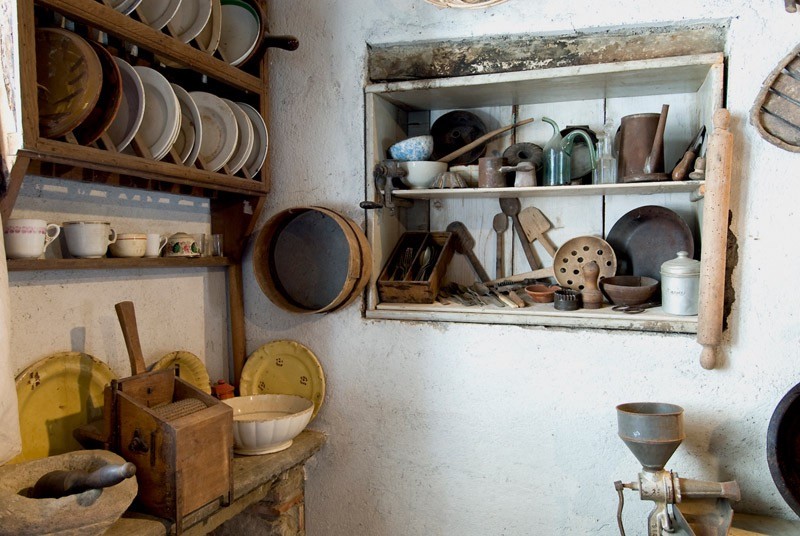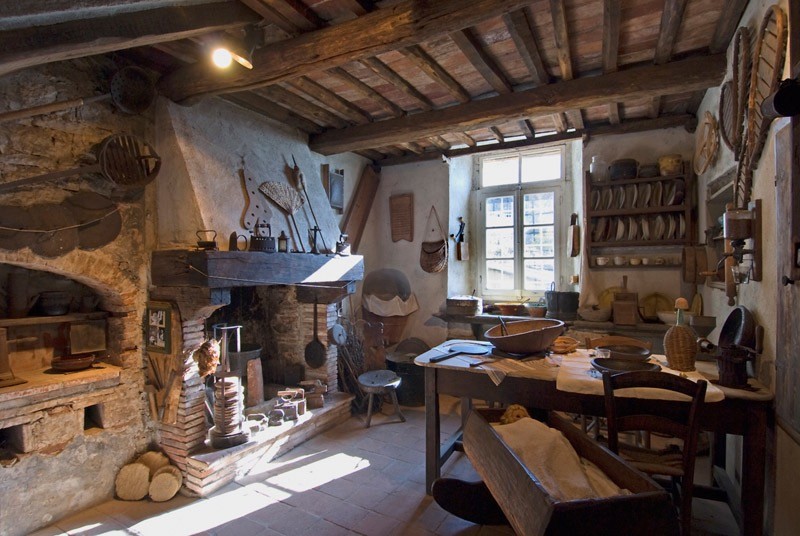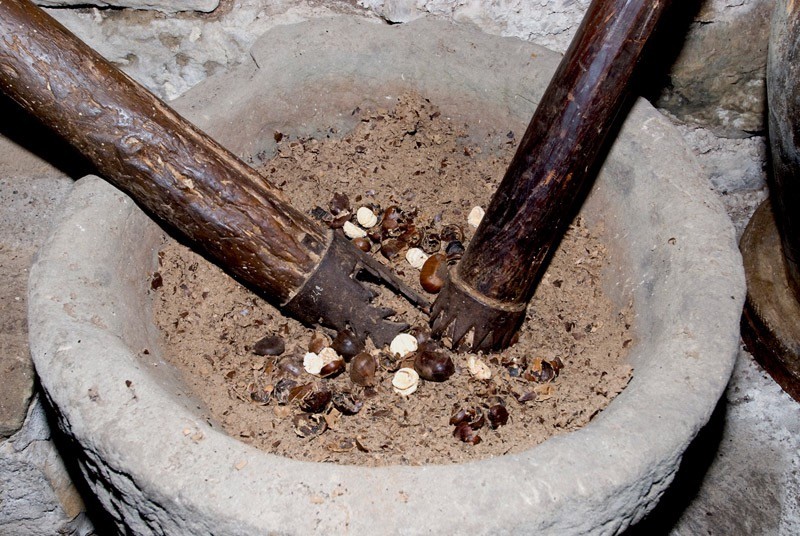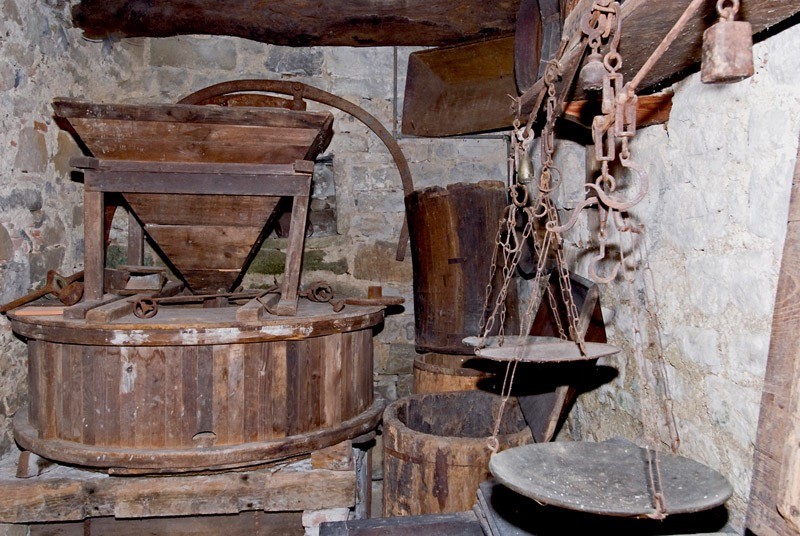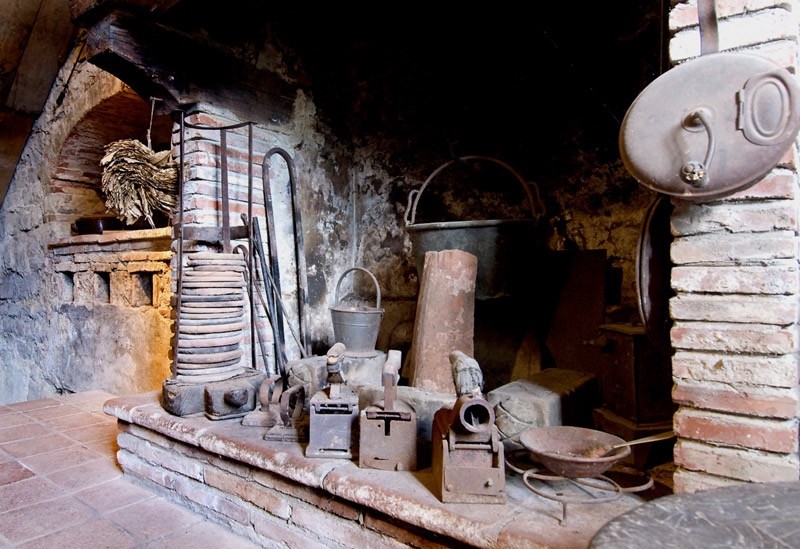
Information
District/Location:
Pescaglia, località Colognora
District:
Piana di Lucca
Address:
Via Fratta - Colognora - Val di Roggio

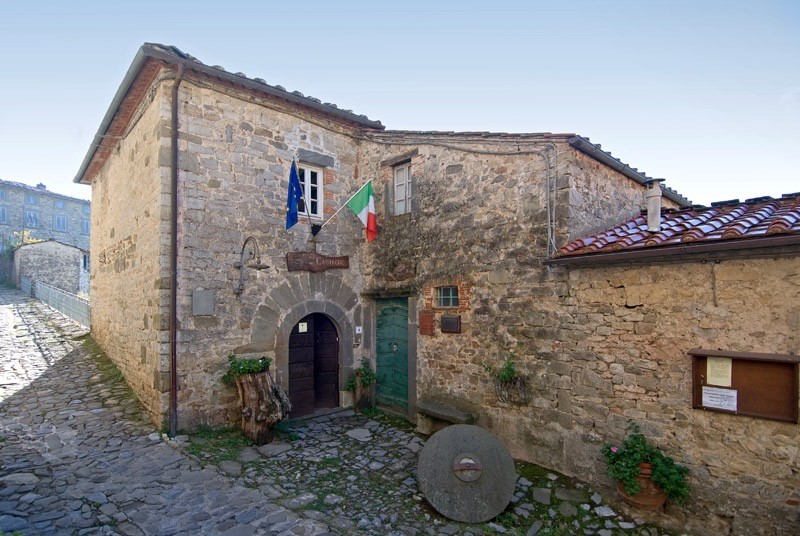
The Chestnut Museum was set up by volunteers to provide evidence for and explain the historical importance of the chestnut tree in the Valle di Roggio area. There is evidence of chestnut cultivation in this area dating back to the Middle Ages; in 1985 a parchment was found dated 828 that testifies to the cultivation of chestnuts for culinary use in Colognora. Long and painstaking research and restoration work has allowed for the recovery of items that had been collected and temporarily exhibited in the parish church annexes since 1979.
The museum is organised in two sections: one on the use of chestnut wood (carpentry, bins, baskets, the woodland, tannin, charcoal and its use etc…); and the other on chestnut cultivation for culinary use (with examples of tools used for the grafting and pruning of trees, the harvesting, drying and "threshing" of chestnuts, and the milling, conserving and cooking of flour).
The Museum grounds also feature a "chestnut path" that leads through the woods, with information panels, to an area where protected varieties of chestnut trees have been planted.
The museum has recently been endowed with an education hall where information is available on chestnut varieties, the biggest exemplars in the Lucca area and the whole of Italy, chestnut diseases and the nutritional value of chestnut flour. The setting up of this resource was made possible with the help of Lecturers from the University of Florence and the Saint Anna Institute in Pisa, the State Forestry Corps, the ASL 2 of Lucca and the IRF (Forestry Research Institute).
The museum is organised in two sections: one on the use of chestnut wood (carpentry, bins, baskets, the woodland, tannin, charcoal and its use etc…); and the other on chestnut cultivation for culinary use (with examples of tools used for the grafting and pruning of trees, the harvesting, drying and "threshing" of chestnuts, and the milling, conserving and cooking of flour).
The Museum grounds also feature a "chestnut path" that leads through the woods, with information panels, to an area where protected varieties of chestnut trees have been planted.
The museum has recently been endowed with an education hall where information is available on chestnut varieties, the biggest exemplars in the Lucca area and the whole of Italy, chestnut diseases and the nutritional value of chestnut flour. The setting up of this resource was made possible with the help of Lecturers from the University of Florence and the Saint Anna Institute in Pisa, the State Forestry Corps, the ASL 2 of Lucca and the IRF (Forestry Research Institute).
Museo del Castagno Lavoro Vita Civiltà, Loc. Colognora, 1, 55064 Pescaglia LU
Tools for processing chestnut, reconstruction of environments related to the exploitation of chestnut.
The chestnut has always been very important for Colognora as it represented, until recent times, one of the main means of support in the Roggio Valley. The exploitation of the chestnut provided food and firewood, as well as wood for building and making tools and furniture; the leaves of the tree were used for feeding cows or, dried, in the stables for the animals to lie on.
Besides the processing cycle of the chestnut, other activities, like that of the woodcutter, carpenter, charcoal burner, cooper and housewife, all connected with its exploitation, are presented in the seven rooms arranged on three floors. Together with the museum, it is also possible to visit the village and its surroundings, in particular the so called "metato" where the chestnuts were left to dry and the charcoal pit, a dome shaped construction made of many pieces of wood and covered with wet leaves, earth and turf that lies along a marked path in the woods: it was used to make charcoal from soft (chestnut) or hard (oak or beech) wood sorts.
Besides the processing cycle of the chestnut, other activities, like that of the woodcutter, carpenter, charcoal burner, cooper and housewife, all connected with its exploitation, are presented in the seven rooms arranged on three floors. Together with the museum, it is also possible to visit the village and its surroundings, in particular the so called "metato" where the chestnuts were left to dry and the charcoal pit, a dome shaped construction made of many pieces of wood and covered with wet leaves, earth and turf that lies along a marked path in the woods: it was used to make charcoal from soft (chestnut) or hard (oak or beech) wood sorts.
- FRATI A., GIANNINI M., Il museo del Castagno a Colognora Val di Roggio, estratto dalla Rivista di Archeologia Storia Costume, Sezione delle Seimiglia- Istituto Storico Lucchese, anno XXIII, n. 1-2, 1995
Scopri altre attrazioni vicino a Museum of the Chestnut Tree
See allYou may also like..
See allFind more
0








